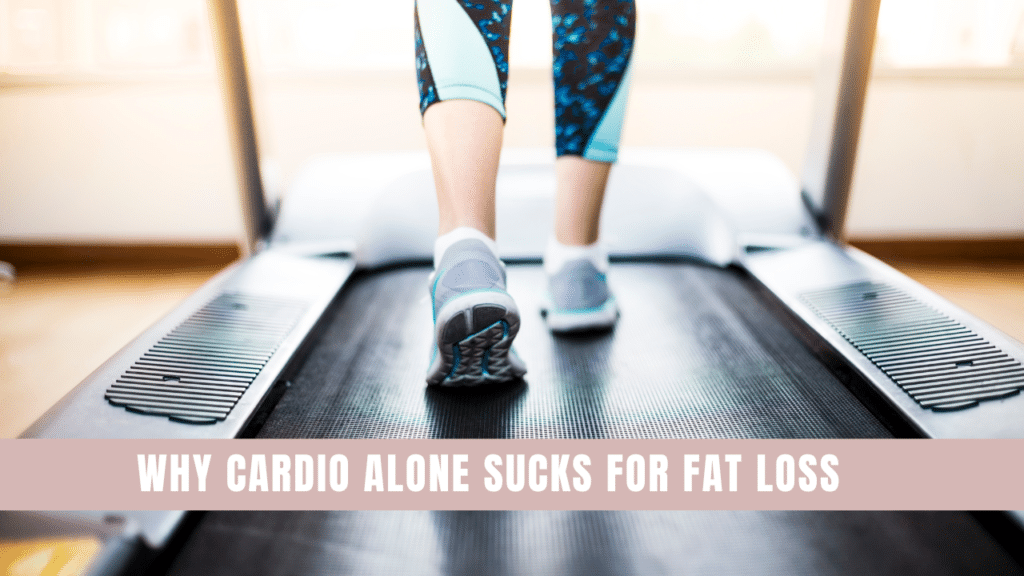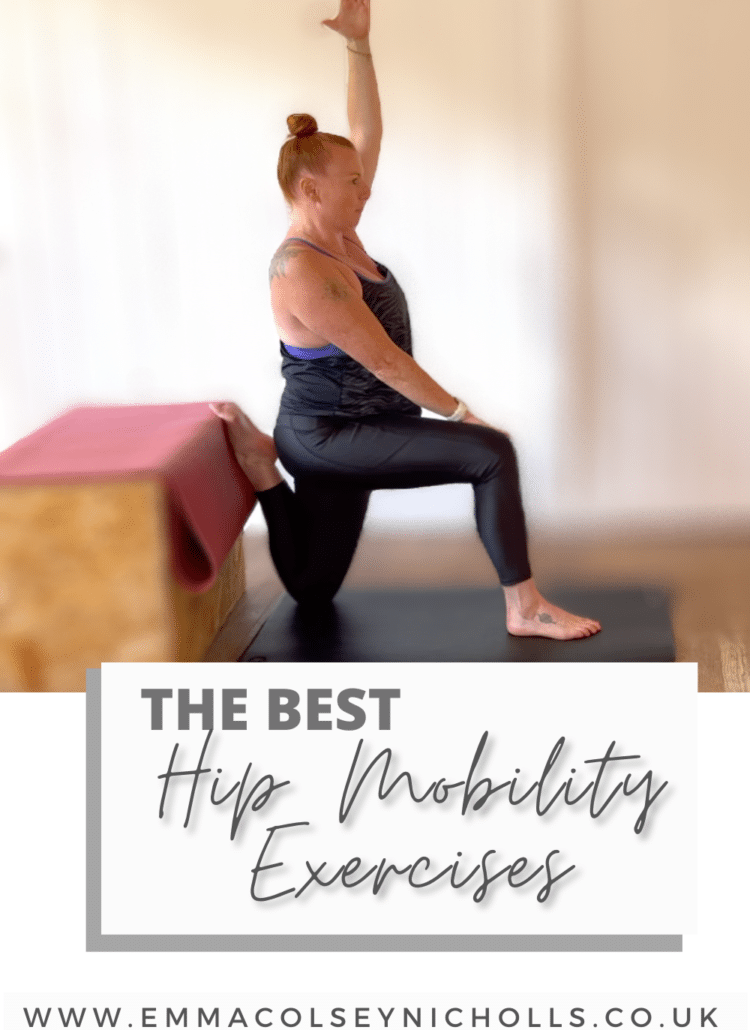Cardio Or Weights For Fat Loss?

Cardio or weights for fat loss? When it comes midlife women who are looking to get into better shape, cardio has long been regarded as the go-to solution. But which is better?
Even one of my clients recently said to me that she thought she needed to start doing more cardio. When I asked her why she thought she needed to do that, her answer was ‘isn’t that what you need to do to burn fat?’
Ah yes, the fat-burning zone.
Whilst that is a thing, it doesn’t work in the way in which you think. So let’s debunk that myth right now.
From jogging to cycling and everything in between, people often turn to cardiovascular workouts with the belief that they will magically melt away excess fat.
However, recent research suggests that the relationship between cardio and fat loss may not be as straightforward as you may have been told in the past.
So let’s dive into the cardio myth and discover what the best way is to burn body fat for the midlife woman according to the science.
Limited Calorie Burn
While cardio exercises undoubtedly can burn more calories during the workout, it may not be the most efficient way to achieve a significant caloric deficit over time.
Resistance training has the power to increase your resting metabolism and so will burn more calories over time. Resting metabolism accounts for 60–70% of your daily calorie burn. This is why you need to use strength training to increase your metabolic rate for fat loss.
The reason behind this lies in the fact that resistance training builds lean muscle mass, which in turn increases the basal metabolic rate, leading to more calories burned even at rest.
Cardio will burn calories in the moment, but as soon as you stop, so does the calorie burn.
Do resistance training, build muscle and your body will burn more calories on a daily basis.
Potential Muscle Loss
Another drawback of hours on the treadmill for fat loss. Not only can it be boring AF for many people, but you also have the potential for muscle loss.
Doing a tonne of cardio sessions without incorporating resistance training can lead to muscle breakdown IF there is also a negative energy balance. Effectively doing the opposite of what we talked about in point one. Cardio will eat into muscle gains if you are also in a calorie deficit.
Preserving muscle mass is crucial during fat loss, as it helps maintain a higher metabolic rate and that sexy ‘toned’ look that many women are striving for.
This is why cardio alone is not the answer for long-term fat loss.
Metabolic Adaptation
The human body is pretty incredible and it has this wonderful ability to adapt to its environment, including exercise routines. Long periods of cardiovascular exercise can trigger metabolic adaptations that can actually stall fat loss progress.
It’s believed that excessive cardio can lead to a decrease in resting metabolic rate and increased hunger, potentially offsetting the calorie deficit created during exercise.
This metabolic adaptation is a survival mechanism that aims to conserve energy during periods of prolonged physical stress. Think in terms of hunter-gather days when the body had to travel far on foot on little food. It had to adapt in order to stay alive.
In essence, as you get fitter, your body becomes more efficient at running on less calories. Don’t get me wrong. Being fitter is a good thing, but when it comes to fat loss, you want to burn more calories to keep on burning fat stores, not less.
Again we come back to that maintenance of muscle mass to continue to stoke that metabolic burn.
Time Efficiency
You are busy and cardio can be hella time-consuming. Cardio workouts typically require longer durations to burn a significant number of calories compared to other forms of exercise.
A study published in the journal Medicine and Science in Sports and Exercise found that high-intensity interval training (HIIT) provides similar, benefits in terms of cardio vascular fitness to traditional cardio exercises, despite significantly shorter workout durations.
HIIT combines bursts of intense exercise with brief recovery periods, resulting in a greater caloric burn and increased fat oxidation. A 2011 study in the Journal Of Obesity found that ‘HIIT produced significant increases in aerobic and anaerobic fitness, brings about muscle adaptations, appears to have a dramatic acute and chronic effect on insulin sensitivity. The effects of HIIT on subcutaneous and abdominal fat loss are promising’
HIIT may be more time efficient, and it’s actually my preferred way to workout, though I know some people absolutely despise and it may not be the best strategy for beginners. So personal preference plays a part here too.
Individual Variability
It’s essential to consider individual differences in response to exercise. While some people may experience significant fat loss from cardio workouts, others may not respond quite as well.
We are all so incredibly different, variations in genetics, body composition, and metabolic rate play a significant role in how you will respond to different forms of exercise. Not to mention your own personal preferences and the type of exercise you actually enjoy.
Acknowledging variability and personal preference reinforces the importance of creating a balanced exercise routine that includes both resistance training and cardio to optimize fat loss.
This should be given even greater consideration to the midlife woman as I will point out below.
As example of my own personal experience. I am currently doing a lot more cardio as I am training for a race. I have been doing longer-duration runs of over 2 hours on a weekly basis.
Guess what?!?
I haven’t dropped a single extra pound of body weight. In fact, I have even gained a little, even with all of that added cardio.
What To Do Instead
Use cardio sparingly as part of your balanced fitness routine.
Cardio is good for your heart and often people also find it as a good escape. If you enjoy doing it, then do it because you enjoy it, not because you think it is the only way to burn fat.
For these reasons, I always recommend that as a midlife woman, you approach a training programme that includes resistance training, HIIT, mind/body exercises as a priority over cardio.
A 3-4 day training week this may look like:
- 2 x strength training sessions
- 1 x HIIT or metabolic Conditioning Session
- Lower intensity cardio if you want to include it, or daily walking.
And of course, let’s not fail to mention that it’s not the exercise at all that will elicit the fat loss, but your nutritional habits.
- Resistance training to build muscle, improve metabolism and give your body shape tone and definition
- Cardio to support a healthy heart and cardiorespiratory health
- Nutrition to create a calorie deficit and create fat loss
I always have to caveat any recommendations by also saying, that the most effective exercise for anyone is the one that you can stick with and that will actually be able to keep on doing.
I hope this helps you on your own midlife health journey.
What is your preferred method of training?




Leave a Reply